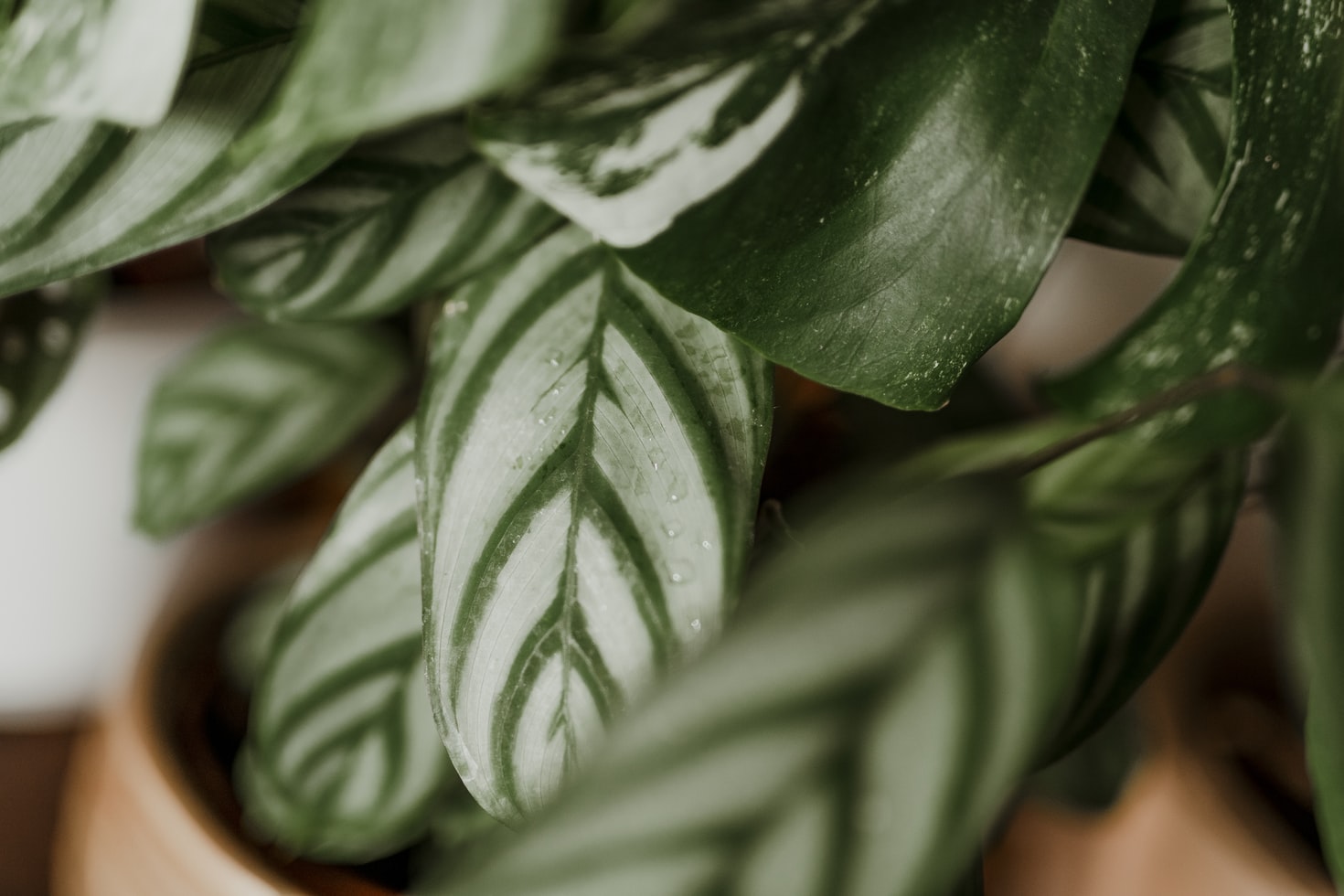Calathea Ornamental Plants are leaf plants that are characterized by unique and striking leaf patterns. This ornamental plant belongs to the Marantaceae family which at first glance is similar to the Aglaonema ornamental plant which is equally striking in its leaves. The two actually have a striking difference, namely, the calathea leaves are more mottled in color and the stems are stiffer.
Calathea ornata (Pinstripe Calathea) is an annual plant native to South America (mainly Colombia and Venezuela). Plants from tropical America is used in many countries as an ornamental plant. This plant has an underground rhizome.
Calathea ornata is also popularly called the peacock plant or prayer plant. This plant has very beautiful leaves. Calathea grows in clumps, is a perennial herbaceous plant with soft stems. The shoots of this ornamental plant come from the roots of the rhizome or tuber below the soil surface.
The leaves of this ornamental plant emerge from the middle rosette and part of the short stem. The leaves are broad, oval, and elliptical. Variegata leaves are red, purple, and green. This ornamental plant is sensitive to dark light and rolls its leaves at night, which is why it is called a “prayer plant”.
The leaves of the Calathea houseplant love distilled water and rainwater. If forced to use tap water, it is best to hold it for one night before using it for watering calathea. Water that contains a lot of chemicals or tap water without settling will make damaged calathea leaves look like they are on fire.
Calathea does not like too much or stagnant water, it is enough to water it enough to make the growing medium wet enough. Calathea loves high humidity. Dry conditions will make Calathea leaves beautiful brownish on the edges of the leaves.
Meet Calathea’s Nutritional Needs
For proper growth and color, apply three pounds of nitrogen per 1,000 square feet every month. At low temperatures, fertilizer application should be reduced, but frequent irrigation requires increased fertilization. Insufficient levels cause loss of leaf color and may result in leaf spotting.
High potassium levels can cause leaf spots and reduce color intensity. The minimum nitrogen source you should provide is 50% urea or ammonia, with higher percentages.
Sufficient Water Needs
Finding the right balance is tricky, as this plant likes moist soil but does not like standing water. During the growing season, try to water several times a week as soon as the topsoil has dried.
During the rainy season, when the plant produces little or no new growth, the frequency of watering can be reduced. If you’re watering properly but still feel that your Calathea ornata houseplant isn’t growing well, it’s a good idea to switch to mineral or distilled water.
Pruning Technique
So that these ornamental plants do not die easily, you should trim the stems regularly if one of the stems dies. This is related to the possibility that dead stems can be caused by pests and plant diseases. Thus, pruning will reduce the spread of pests and diseases.
Sufficient Lighting
Lighting or lighting is an important thing that needs to be considered when caring for calathea because this ornamental plant is very sensitive to sunlight. That means that sunlight is very influential on the growth of calathea ornamental plants, which should not be given too much or too little. If you place calathea ornamental plants in an area that has a lot of light or is exposed to direct sunlight, the leaves of the calathea plant will not grow optimally.
Calathea leaves can actually change color, curl, and even dry up which can eventually die. Meanwhile, if you are in a room that lacks lighting, calathea ornamental plants cannot photosynthesize properly.
As a result, the growth of the calathea plant will begin to be disturbed, it can even be affected by plant diseases such as mold or spots on the leaves that will damage the beauty of the calathea ornamental plant.
Choosing the Right Planting Media
Calathea ornamental plants are more suitable to be in a humid environment with an ideal humidity level of around 50 percent or more. In addition to certain types or varieties, calathea ornamental plants can adapt to lower humidity levels. The more sensitive types of calathea plants actually require a higher humidity level of about 60 percent.
This humidity can be overcome by choosing the right planting media, which can maintain the humidity, for example, can hold water more and provide sufficient moisture for calathea plants.
How to Get Calathea
You can get calathea easily at Flower Advisor Singapore. There are various types of calathea that you can choose from. There are various types of circuits to choose from as well. You will also get a good and unforgettable service quality. Prove it!








